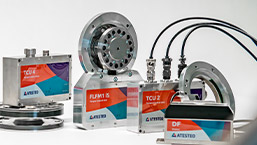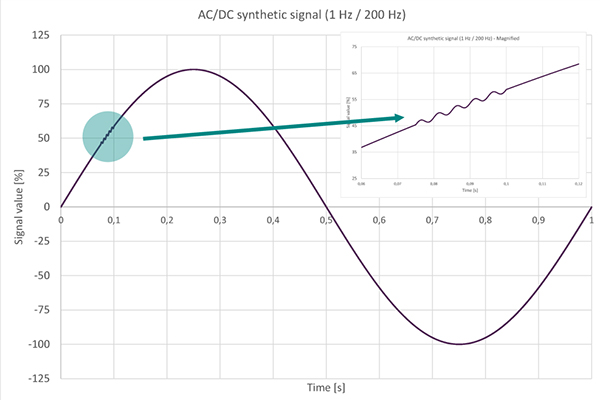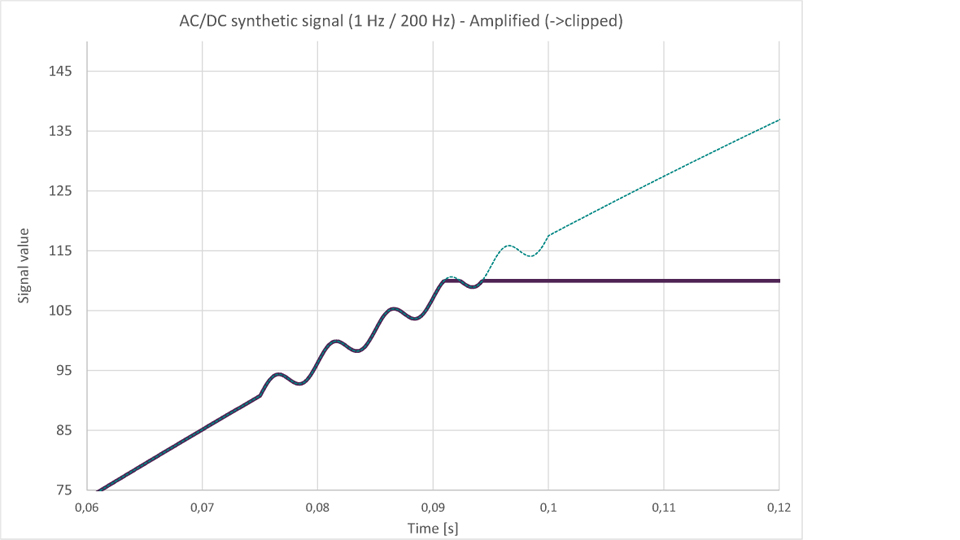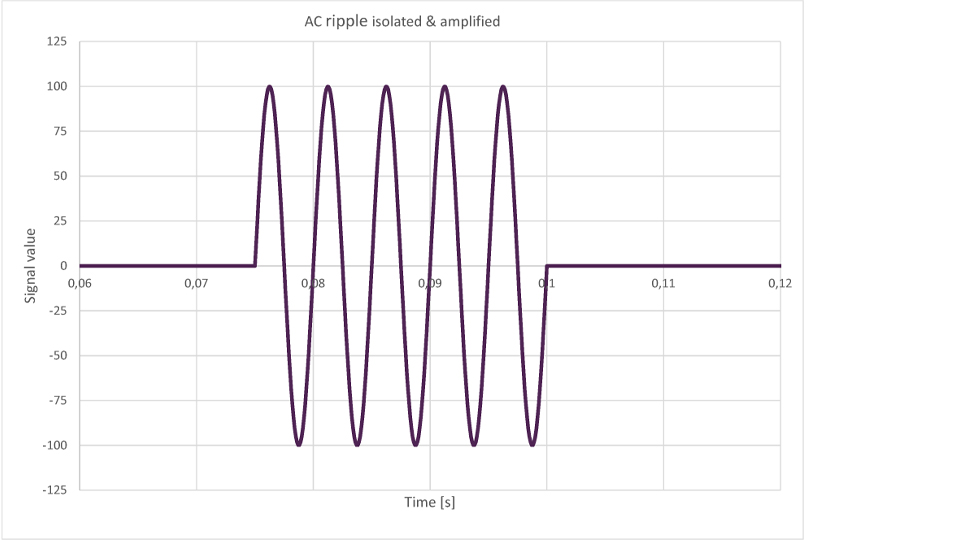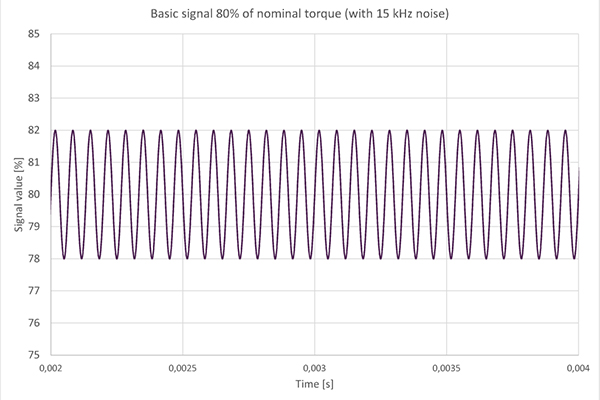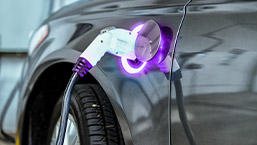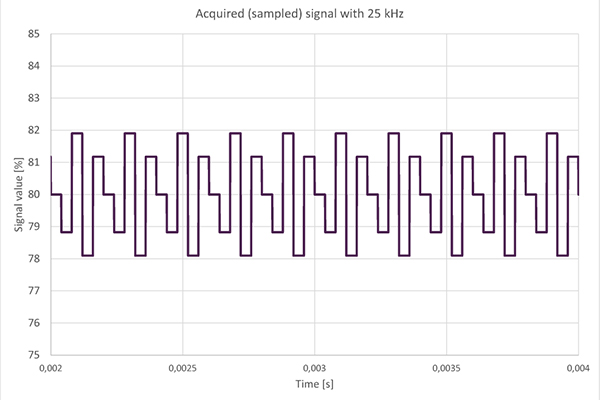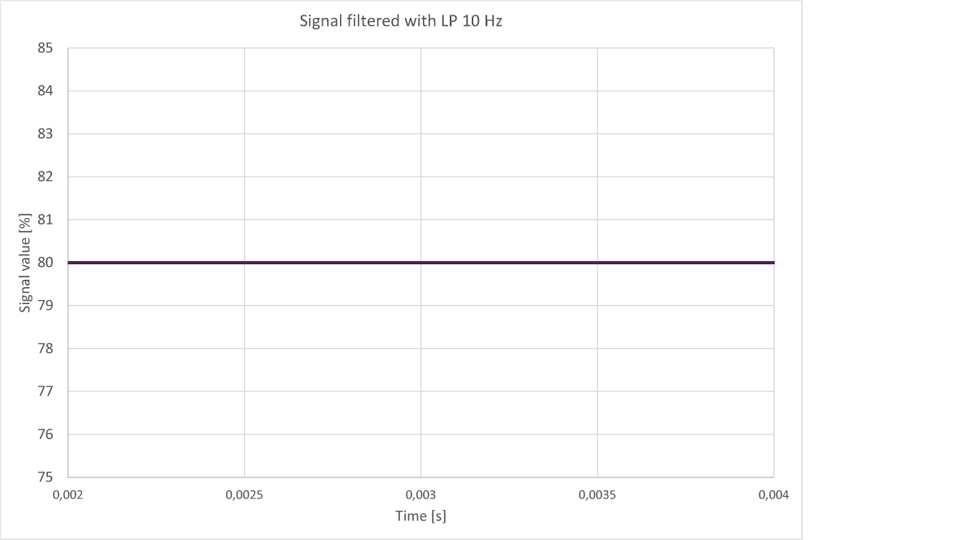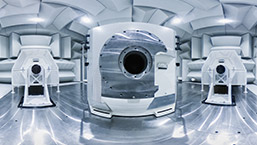New possibilities for measuring torque ripple and reducing signal oscillations
High- and low-pass filters in torque measurement technology for high-accuracy measurement of torque ripple and elimination of irrelevant signal oscillations.
Torque measurements are essential in the development of new drivetrains and drive systems to ensure maximum durability and efficiency of the prototypes. In its in-house torque measurement technology, ATESTEO uses filters that enable high measurement accuracy of the harmonics during torque. They already filter out irrelevant signal oscillations directly in the measuring body. This allows the drive systems to be better analysed during testing in terms of efficiency, durability, and NVH properties, thus optimised at an early stage in development.
ATESTEO is also the world’s leading specialist for drivetrain testing because the tests and trials are carried out on its own highly developed test benches using specially developed technology. The torquemeters are developed in-house at ATESTEO and are continually adapted to the demanding requirements of customers and their testing projects. Because of the company’s extensive technical and engineering know-how, many challenges can be solved by new or further developments. And they set new standards in the industry. The innovative high-pass and low-pass filters from ATESTEO solve the frequently occurring problem of measurement inaccuracy in the event of torque ripple or enable the optimised transmission of high-frequency signal oscillations. Torque measuring instruments from ATESTEO are precise and reliable instruments for measuring torque. A new AC ripple detection and a low-pass filter now significantly extend the functionalities of the ATESTEO torquemeters.
The ATESTEO high-pass filter opens up the possibility of precisely measuring AC ripple
Automobile manufacturers develop their new, modern drivetrains and drive systems from the point of view of, among other considerations, optimising noise and vibration emissions for maximum comfort during driving. Torque ripple, also called AC ripple, is a major trigger for acoustic noise and vibration generated by the drivetrain. In order to reduce these, it must be possible to precisely measure this AC ripple. And that has been a problem until now.
Previously: low AC ripple with poor resolution
Torque ripple is a high-frequency signal which is integrated into the torque signal. Its amplitude is very low in comparison to the torque signal. Since the resolution of a measurement signal is calibrated to the nominal torque range, the torque ripple is relatively low. For this reason, it has only been measured up to now with poor resolution, even in highly accurate measuring systems.
This synthetic diagram shows an AC ripple of 200 Hz, in which the basic torque signal (DC+AC 1 Hz) is integrated. The amplitude ratio between the base signal and the residual ripple is 100:1. The AC ripple can only be readily recognised if the diagram is enlarged. What is easily possible here with synthetic data requires changes in the measuring system. Instead of zooming in or out, the real signal needs to be amplified to clearly be recognised.
The solution: amplification of the real signal without clipping
The signal must be amplified so that the engineer can also recognise the AC ripple during the torque measurement. The amplification of the harmonics must take place within the rotational measuring body for an accurate evaluation. However, if the signal were only amplified, its value would be outside the measuring range. ATESTEO torque sensors typically have measuring ranges of 110 percent or 120 percent. Any value that goes beyond these ranges would be clipped; that is, cut off in the measurement. In order to prevent this, smarter signal processing is required. Otherwise, the AC ripple is only increased in the very low ranges of the measuring range – and this would not be expedient for torque measurement.
This diagram shows the signal with a gain factor of only 2. The synthetic purple line was cut off to meet the system limits of 110 percent. The turquoise line shows the real line as it should be after the amplification.
To prevent clipping, the new high-pass filter from ATESTEO isolates the ripple value in order to subsequently gain it as a meaningful value. For this purpose, the newly developed 5 Hz high-pass filter isolates the ripple signal from the base signal and then amplifies the isolated signal. Thus, the entire available measuring range is used.
Isolated and amplified signal (factor 100)
With isolation, amplification, and calibration for a highly accurate result
The isolation and amplification of the ripple signal is performed by electronic components in the rotor board. A further measure is required for the transmission of the signal. The AC ripple signal is only additional information. The original torque signal (DC+AC) is still the main information. Therefore, data transmission of the torque signal and the AC signal must be enabled. Many of the ATESTEO torque measuring devices have dual telemetry, which makes it possible to transmit this pre-processed signal to the evaluation unit in parallel with the original torque signal. Finally, the second channel is calibrated so that it also achieves the required measuring accuracy. Since ATESTEO has its own DAkkS-accredited calibration laboratory, the calibration is also carried out in house. For this purpose, the rotor is set to a calibration mode which allows the AC channel to be calibrated separately.
Using the new high-pass filter, for the first time, ATESTEO offers the possibility to recognize AC ripple well, to measure it accurately, and to make it available to the customer as a meaningful value.
ATESTEO low-pass filter for accurate measurement despite high-frequency oscillations
High-frequency oscillations in the torque signal can challenge the measurement technique. This is especially true if the frequency of the oscillations is above the actual dynamics of the measuring system. Thus, these high-frequency vibrations also occur more frequently on e-mobility test benches owing to their comparatively high rotational speeds. Torque peaks of 10 kHz and more, triggered, for example, by tooth engagement frequencies, are then possible.
Signal with 15 kHz oscillation
Previously: lost signal oscillation makes efficiency measurement inaccurate
The frequency of such oscillations is higher than the typical torque measurement dynamics of 7 kHz. As a result, these high-frequency oscillation torque values would only be transmitted with a limited frequency via the wireless data interface. The signal oscillation would thus be (partially) lost on the way to the measuring instrument (cf. Nyquist frequency). Data analysis and data interpretation would therefore be more complicated and accurate efficiency measurements impossible.
25 kHz sampled signal (equivalent to 7 kHz dynamic response)
The solution: filtering the signal with individual filter corner frequency
Using the new low-pass filter, ATESTEO filters the signal before it is passed on to the stationary part of the torque sensor. The low-pass filter function is implemented by electronic filter components which are installed on the rotor electronics during their production. The individual filter corner frequency can be selected before production. As a result, the output signal of the torque measuring system is free of vibrations and can thus be analysed more easily.
The low-pass filter is available for selected ATESTEO torque sensors (torque transducers). Dual telemetry systems enable the parallel transmission of the original and filtered signals to the evaluation unit. High-frequency oscillation signals can also be measured and evaluated with special NVH equipment, which has more dynamic signal detection than wireless rotation systems.


